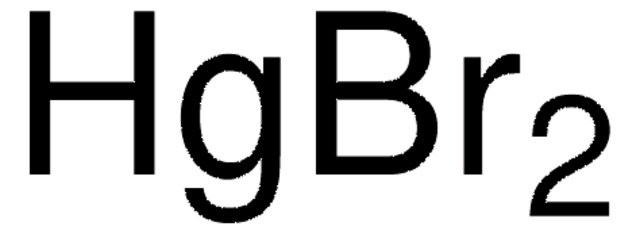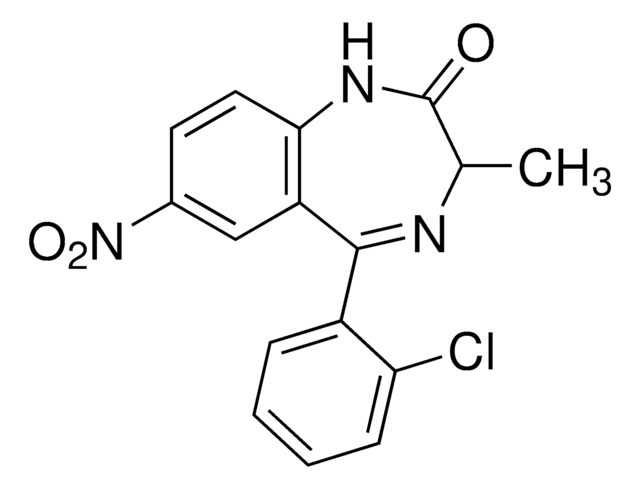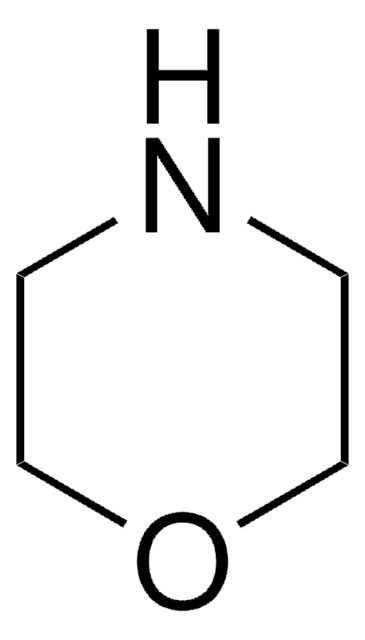Wichtige Dokumente
83353
Quecksilber(II)-bromid
puriss. p.a., ACS reagent, ≥99.0% (precipitation titration)
Synonym(e):
Mercuric bromide
About This Item
Empfohlene Produkte
Qualität
ACS reagent
puriss. p.a.
Qualitätsniveau
Dampfdruck
1 mmHg ( 136.5 °C)
Assay
≥99.0% (precipitation titration)
Form
powder or crystals
Glührückstand (nach Reduktion)
≤0.02%
bp
322 °C (lit.)
mp (Schmelzpunkt)
236 °C (lit.)
Anionenspuren
chloride (Cl-): ≤2000 mg/kg
sulfate (SO42-): ≤50 mg/kg
Kationenspuren
Ca: ≤10 mg/kg
Cd: ≤5 mg/kg
Co: ≤5 mg/kg
Cr: ≤5 mg/kg
Cu: ≤5 mg/kg
Fe: ≤5 mg/kg
K: ≤50 mg/kg
Mg: ≤5 mg/kg
Mn: ≤5 mg/kg
Na: ≤50 mg/kg
Ni: ≤5 mg/kg
Pb: ≤5 mg/kg
Zn: ≤5 mg/kg
SMILES String
Br[Hg]Br
InChI
1S/2BrH.Hg/h2*1H;/q;;+2/p-2
InChIKey
NGYIMTKLQULBOO-UHFFFAOYSA-L
Suchen Sie nach ähnlichen Produkten? Aufrufen Leitfaden zum Produktvergleich
Allgemeine Beschreibung
Signalwort
Danger
H-Sätze
Gefahreneinstufungen
Acute Tox. 1 Dermal - Acute Tox. 1 Inhalation - Acute Tox. 2 Oral - Aquatic Acute 1 - Aquatic Chronic 1 - STOT RE 2
Lagerklassenschlüssel
6.1B - Non-combustible acute toxic Cat. 1 and 2 / very toxic hazardous materials
WGK
WGK 3
Flammpunkt (°F)
Not applicable
Flammpunkt (°C)
Not applicable
Hier finden Sie alle aktuellen Versionen:
Analysenzertifikate (COA)
Leider sind derzeit keine COAs für dieses Produkt online verfügbar.
Wenn Sie Hilfe benötigen, wenden Sie sich bitte an Kundensupport
Besitzen Sie dieses Produkt bereits?
In der Dokumentenbibliothek finden Sie die Dokumentation zu den Produkten, die Sie kürzlich erworben haben.
Unser Team von Wissenschaftlern verfügt über Erfahrung in allen Forschungsbereichen einschließlich Life Science, Materialwissenschaften, chemischer Synthese, Chromatographie, Analytik und vielen mehr..
Setzen Sie sich mit dem technischen Dienst in Verbindung.











